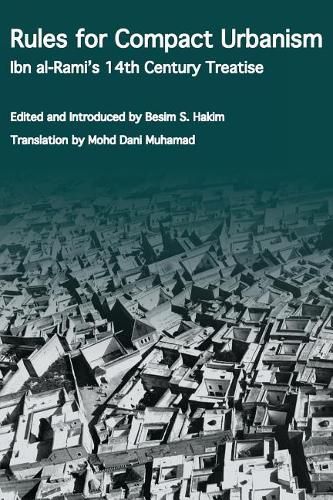Readings Newsletter
Become a Readings Member to make your shopping experience even easier.
Sign in or sign up for free!
You’re not far away from qualifying for FREE standard shipping within Australia
You’ve qualified for FREE standard shipping within Australia
The cart is loading…






This is a translation from the original Arabic of a treatise that dates back to the early fourteenth century, written by a builder and master-mason. It is the most comprehensive treatise on building rules within the Mediterranean region. What makes Ibn al-Rami’s treatise significant is that: a) it was written by a master-mason, b) it draws upon texts that were available to him that date back to the eighth century C.E. from various regions of the Islamic world, specifically from the Arabian peninsula, Iraq, Egypt, Andalus (Islamic Spain), and Tunisia. It presents rules for building and address change and growth within built environments that were compact and typical of the majority of towns and cities located in regions surrounding the Mediterranean basin. Walls between proximate neighbours posed a challenge that was resolved by intricate rules, which were designed to ensure that the rights of all parties involved would be respected and protected. An underlying principle that was always observed was to ensure no harm or damage occurs to owners of properties during the on-going processes of change and growth. The rules also assumed and were designed to protect the freedom of property owners to exercise their full rights within their property. They were compatible with the nature of a dynamic process that relied on the timeline and sequence of built facts that had to be respected and which ensured subsequent decisions would be compatible. Feedback between proximate neighbours was a part of the system that promoted balance and equity. Our contemporary low density built environments that are manifested in the suburban landscape were questioned and criticized since a number of decades ago. Recent efforts to create compact neighbourhoods friendly to pedestrians can be inspired by the rules and solutions of historic compact towns and cities which are discussed and presented in this treatise.
$9.00 standard shipping within Australia
FREE standard shipping within Australia for orders over $100.00
Express & International shipping calculated at checkout
This is a translation from the original Arabic of a treatise that dates back to the early fourteenth century, written by a builder and master-mason. It is the most comprehensive treatise on building rules within the Mediterranean region. What makes Ibn al-Rami’s treatise significant is that: a) it was written by a master-mason, b) it draws upon texts that were available to him that date back to the eighth century C.E. from various regions of the Islamic world, specifically from the Arabian peninsula, Iraq, Egypt, Andalus (Islamic Spain), and Tunisia. It presents rules for building and address change and growth within built environments that were compact and typical of the majority of towns and cities located in regions surrounding the Mediterranean basin. Walls between proximate neighbours posed a challenge that was resolved by intricate rules, which were designed to ensure that the rights of all parties involved would be respected and protected. An underlying principle that was always observed was to ensure no harm or damage occurs to owners of properties during the on-going processes of change and growth. The rules also assumed and were designed to protect the freedom of property owners to exercise their full rights within their property. They were compatible with the nature of a dynamic process that relied on the timeline and sequence of built facts that had to be respected and which ensured subsequent decisions would be compatible. Feedback between proximate neighbours was a part of the system that promoted balance and equity. Our contemporary low density built environments that are manifested in the suburban landscape were questioned and criticized since a number of decades ago. Recent efforts to create compact neighbourhoods friendly to pedestrians can be inspired by the rules and solutions of historic compact towns and cities which are discussed and presented in this treatise.